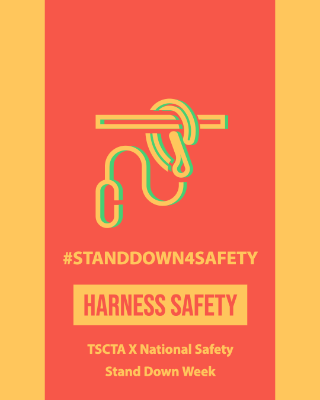For our final phase of this week’s #StandDown4Safety series, we’re exploring the most ubiquitous piece of safety equipment for those work at height, the safety harness. From their origins as the body belts popular on work sites in the first half of the 20th century, one constant has remained at the intersection of harnesses and fall protection:
YOU HAVE TO WEAR IT FOR IT TO WORK
While this may seem obvious, many of the advancements in harness technology have focused on making harnesses easier and more comfortable to keep on for the entirety of the wearer’s time while working at height. Issues with compliance for workers who feel the cumbersome nature of the equipment prevented them from properly performing the tasks required of them is still one of the largest issues regarding fall protection in the construction industry.
Incorporating the lessons learned by the paratroopers of WW2 and recreational mountain climbers in the post-war era, advances in materials science over the last quarter-century have allowed harnesses to essentially become a part of everyday work clothing as opposed to an external piece of safety equipment. This, despite the all-encompassing nature of modern harnesses, which, now ensure proper fall protection with straps worn around the trunk and thighs, creating a dispersed “stopping force” to prevent serious post-fall complications.
YOU HAVE TO INSPECT YOUR HARNESS AND MAKE SURE YOU ARE CONNECTED
After donning the harness, a full inspection of the equipment and how it’s anchored is the best way to protect against falls.
According to The Center for Construction Research and Training, workers wearing harnesses should adhere to the following steps when inspecting their harness before use:
- Inspect your harness for worn or damaged straps, buckles, D-ring and lines.
- Follow the manufacturer’s instructions when you put on your harness.
- Make sure all straps are fastened and adjusted correctly.
- Don’t start work until you are satisfied with the condition and fit of your fall protection harness.
Proper anchoring is the final step in securing yourself for a day at work at height. OSHA requires that anchorage must be capable of supporting at least 5,000 pounds per worker attached. From there, your lanyard should be attached to the D-ring on your fall arrest harness, then anchored securely to an anchor point. With every secure and in the right place, at the very least, you should be able to prevent most of the catastrophic injuries that come with falls from height.
However…
IT’S NOT OVER WHEN THE FALL STOPS!
As workers are so often concerned with not falling in the first place, the perils of the post-fall experience are ones that may not be on the forefront of a workers mind while strapping in their harness. But, for safety professionals, suspension trauma – caused by the restriction of blood flow caused by the same restrictive properties that allow harnesses to prevent falls – can be as present a concern as falls from height. Which is why OSHA requires employers to have a plan to “provide for prompt rescue of employees in the event of a fall.”
And promptness is pivotal: Although it takes 30 minutes of suspension for suspension trauma to set in and potentially lead to death; after only five minutes, workers may become light-headed, nauseous or lose consciousness, making rescue much more difficult.
But, with three simple steps — Plan. Provide. Train. — you can prevent injuries before, after and even during the fall every day, not just when you #StandDown4Safety.


